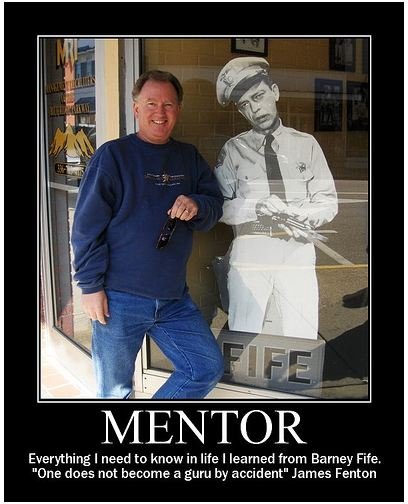A History of Mentoring: Both Formal and Informal
Origins
The history of mentoring traces back to Greek mythology. “Mentor” was a friend of King Odysseus, entrusted to watch over the latter’s son Telemachus. Mentor’s near parental relationship when guiding Telamachus stuck, and the word now bears a similar connotation to this day. “Men” in Greek means “one who thinks” and “tor” is the masculine suffix. Another version, however, is the term comes from a loose translation of “men” taking children on a “tour.”
The 1699 French book “Les Aventures de Telemaque” written by François Fénelon, an imitation of Homer’s classic “The Odyssey” made the concept popular in modern times. Françcis Fénelon was the tutor to the grandson of King Louis XIV, and the lessons he expounded in the book aimed at guiding his pupil in how to become a peaceful and wise monarch.
A study of successful personalities throughout the course of world history reveals most such men had mentors who cared about their growth and development. Alexander the Great had Aristotle, King Arthur of England had Merlin, Chandragupta Muarya of India had Chanakya, Paul of Tarsus, a famous Christian bishop of the first century had Timothy, the poet T. S. Eliot had Ezra Pound, Martin Luther King had Dr. Benjamin Elijah Mays, Beethoven and Mozart had Haydn. The list is endless. A form of this concept was always practiced in monasteries from time immemorial, as illustrated by Saint Bede in his De Corpore, and other narratives, and continues to the day.
Pre Industrial Revolution England
Although the word “mentor” made its first appearance in the English language in 1750, in Chestere’s work ‘Letters to Son, 8th March’ the concept was in vogue much earlier. The guild economy of medieval England survived on craftsmen who manufactured products in their cottage-factories. These craftsmen passed on their trade to their pupils, in a process that bears striking similarity to the modern concept. Such apprentices served their master for 12 years or until they reached 21 years of age.
The Industrial Revolution put an end to the cottage industry of the craftsmen, and with it, the informal system of mentoring they promoted fell into disuse in the commercial-industrial landscape. Young men now found their way to factories as apprentices, and were put through an impersonal system of training rather than an individual teacher-pupil relationship.
Modern Incarnation
The spread of the behavioral school of management in the aftermath of the Second World War raised the importance of human resources, and businesses now began to pay attention on training and development of employees. The earliest of such initiatives were full-blooded management training program generic in nature and lasting for days.
The downturn of the economy in the 1990s was a blessing in disguise in the history of mentoring. The pressure on profits, combined with greater competitive pressures forced many organizations to look at alternative cost-effective methods to open training programs. This initially took to tailoring customized programs from training institutes, to address specific organizational issues, and organizations and managers began to see the benefits of individualized approach to personal development. The layoffs that accompanied the recession left those who remained in highly stressed environments without support, requiring guidance and support on an individual basis.
Research on mentoring as an effective training and development tool had started much earlier, and now more and more people started incorporated the concept to management science as an effective way of training and developing employees. Tim Gallwey’s 1974 book “The Inner Game of Tennis” though related to sports, has a profound impact on the minds of those looking to excel in any field. He said: “the opponent in one’s head was greater than the one on the other side of the net.” This stuck and a psychological orientation was the need for the day. Levinson’s 1978 work “The Season’s of a Man’s Life” referred to a “life cycle” and stressed on the need to improve transition from young adulthood to maturity through a process of mentorship.
The works of Lewis, G. “The Mentoring Manager” published by the Institute of Management Foundation, Pitman Publishing in 1996, and Hay’s “Transformational Mentoring” published by McGrawHill Book Company in 1995 did a lot to provide a theoretical base for the concept, enabling organizations to apply this concept on a widespread basis. The concept soon caught on as a training and development tool owing to its ability to resolve a host of complex issues such as discussing highly personal or confidential matters in depth, and provisions to reflect and discover over a period, a stark contrast to the pre-packaged and one-fits-all solutions typical of generic training programs.
Contemporary Trends
Today, the concept has become universal, and most people regard it as a highly effective developmental tool. Mentors provide expertise to less experienced individuals to help them advance their careers, enhance their education, and build their networks.
Post-modern organizational mentorship takes place in the environment of a learning organization, and focuses on developing competence. The concept of an ideal mentor is now that of an experienced, objective sounding-board with the power to influence events, who help and support people manage their own learning to maximize their potential, develop their skills, improve their performance and become the person they want to be. This is in contrast to the earlier notion of guiding persons on preconceived societal norms of excellence.
References
- 12Manage. “Mentoring.” https://www.12manage.com/methods_mentoring.html. Retrieved May 22, 2011.
- Michigan State University. “What’s Mentoring.” https://web3.canr.msu.edu/vanburen/what's%20mentoring.html. Retrieved May 22, 2011.
- London Deanery. “Mentoring: Theory and Practice.” https://www.faculty.londondeanery.ac.uk/e-learning/feedback/files/Mentoring_Theory_and_Practice.pdf. Retrieved May 22, 2011.
Image Credit: flickr.com/Barry Dahl
